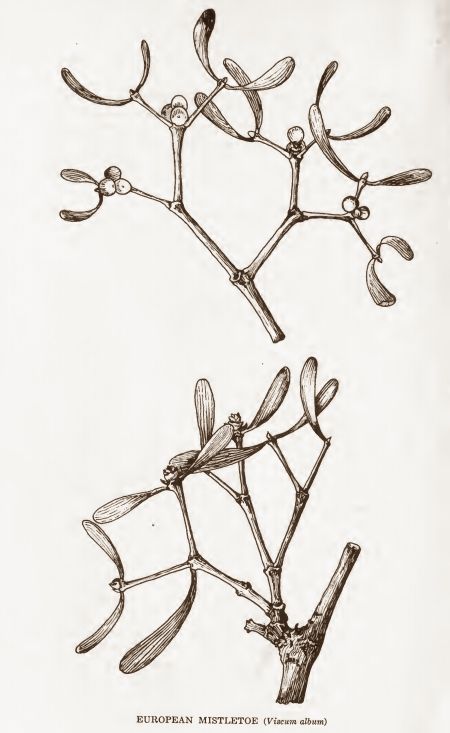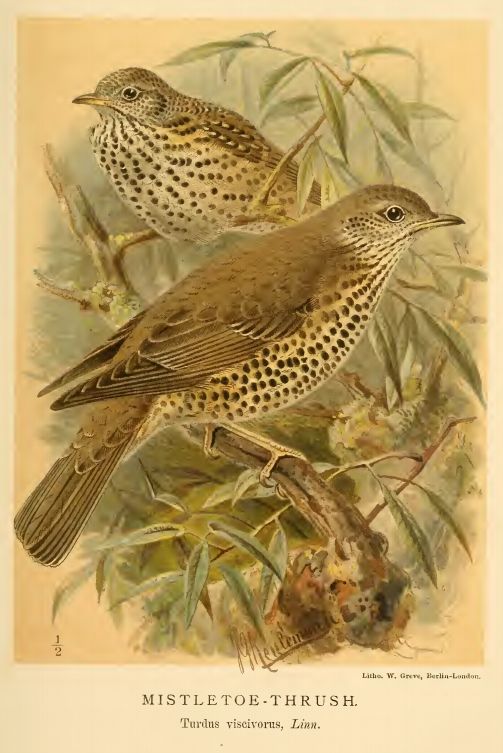Of
all the Norse Gods, Baldur was the finest, the wisest and the most perfect. The
God of Innocence and Gentleness, Baldur the Beautiful was one of the Aesir, the
Children of Odin, and lived in Breidablik, the loveliest of the Halls of
Asgard, where nothing unclean could abide. But Baldur was troubled by dreams of
his death so his mother, Frigg, bade everything living and dead swear an oath
not to harm her son. However, of all the living things she forgot to ask the
mistletoe to promise, thinking it too small and young to hurt Baldur. The rest
of the Gods would amuse themselves by shooting arrows at Baldur and striking
him with swords, delighting as they were magically turned aside. The God of
Mischief, Loki, discovered Frigg’s omission and took a sharpened twig of
mistletoe to Hoder, Baldur’s blind brother and God of Darkness, and tricked him
into casting it at Baldur, who was pierced by the tiny twig and killed
instantly.
 |
| The Death of Baldur |
The Aesir lamented the loss of the Beautiful God and Helmod the
Nimble begged Hel, God of the Dead, to return Baldur to life. Hel replied that
he would agree if every living thing would weep for the loss of Baldur but
Thokk, a giantess who was really Loki in disguise, said she would weep only dry
tears (which are sparks) and so Baldur remains in Hel until Ragnarok, the
Twilight of the Gods, after which he will return to life.
 |
| The Punishment of Loki |
As a punishment, Loki
was bound by his intestines to a rock and a serpent was placed over his head,
to drip venom on his face. Loki’s loyal wife, Sigyn, caught the venom in a bowl
but when she had to turn away to empty it when it was filled, the venom dripped
onto Loki’s face, making him writhe in agony and thus causing earthquakes. It
is because of the death of Baldur that darkness triumphs over light every day
and summer gives way to winter every year. The mistletoe was punished by being
banned from growing in the earth ever again.
 |
| Mistletoe |
In his Natural History,
Pliny the Elder describes how the Druids of Britain would harvest mistletoe by
cutting it from oak trees with a golden sickle and catching it as it fell in a
white sheet before it touched the ground, which would remove its power. The
mistletoe was known as a ‘heal all’ by the Druids but it is, in fact, poisonous
and should never be eaten, as it can result in severe stomach ache, diarrhoea
and gastroenteritis and in extreme cases can be fatal, although tests are being
undertaken to examine its possible use in the treatment of certain cancers.
When the Christians drove the Druids out of these islands, they adopted the use
of mistletoe in their Christmas celebrations although some clergymen, wary of
its pagan associations, would not allow mistletoe to be used in church
decorations. A Cornish tradition says that the Cross on which Jesus was killed
was made from mistletoe wood, which was cursed ever after to be a parasite.
 |
| Mistletoe |
Mistletoe was hung up in homes, particularly in kitchens, where the tradition
of kissing beneath it developed, with a berry taken away for each kiss until
none were left and there were no more kisses; if a girl did not receive a kiss
under the mistletoe, she would not be married in the next year. The plant was
the only decoration that would not be taken down on Twelfth Night, but remained
hanging throughout the year until replaced the following Christmas Eve, and
would protect the house from fire or lightning (hence the Swiss word for
mistletoe - Donnerbesen). Mistletoe was also hung outside, to provide a
place for the night spirits to roost peacefully.
 |
| The Mistletoe Thrush |
The seeds of the mistletoe are
spread by birds, either in their droppings or by wiping the sticky pulp from
their bills, the mistle thrush in particular being noted for this – it was once
called the mistletoe thrush - and the name of the plant is derived from
this behaviour. Mistletoe comes from the Germanic words mist (related to
Anglo-Saxon mixen) meaning ‘dung’ and tan meaning ‘twig’.
No comments:
Post a Comment